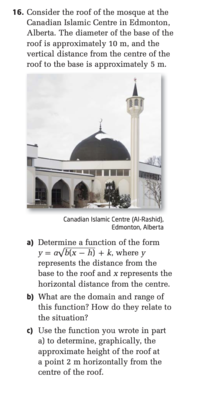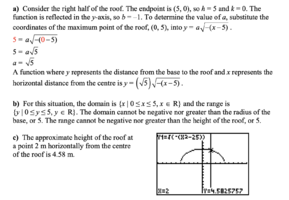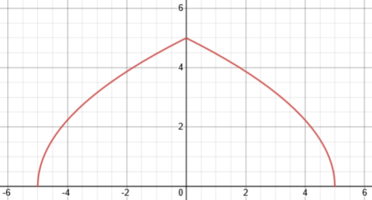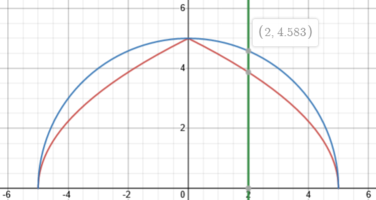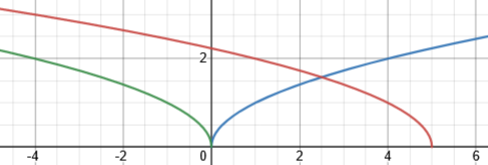Actually, now that I look closer at everything they say, I see that I totally misread it, looking only at the graph, and not looking at the details of the problem and solution myself, but thinking about other problems that look similar.
I was wrong.
In their answer, they do take x as only positive; the only place they allow it to be negative is in their graph. The first line of the answer says they are considering only the right half.
Now, having paid closer attention, I see that
the graph isn't of the function they found at all! Their function was [imath]y=\sqrt{5}\sqrt{-(x-5)}=\sqrt{25-5x}[/imath]. The graph shows [imath]y=\sqrt{-(x^2-25)}=\sqrt{25-x^2}[/imath], which is a circle (though it looks like an ellipse because of different scales on the axis).
So the correct answer to the problem is [imath]y=\sqrt{5}\sqrt{-(2-5)}=\sqrt{15}=3.87[/imath].
In order to graph a cross-section of the roof, I would use [imath]y=\sqrt{5(5-|x|)}[/imath]:
View attachment 34195
Here I've added in their wrong graph (blue) and their wrong answer:
View attachment 34196
But where does it say the graph is flipped? Please explain.
Anyway, all those people who liked my answer should join me in the corner. We can have a big party in honor of the author of the problem solution, who should be there.
